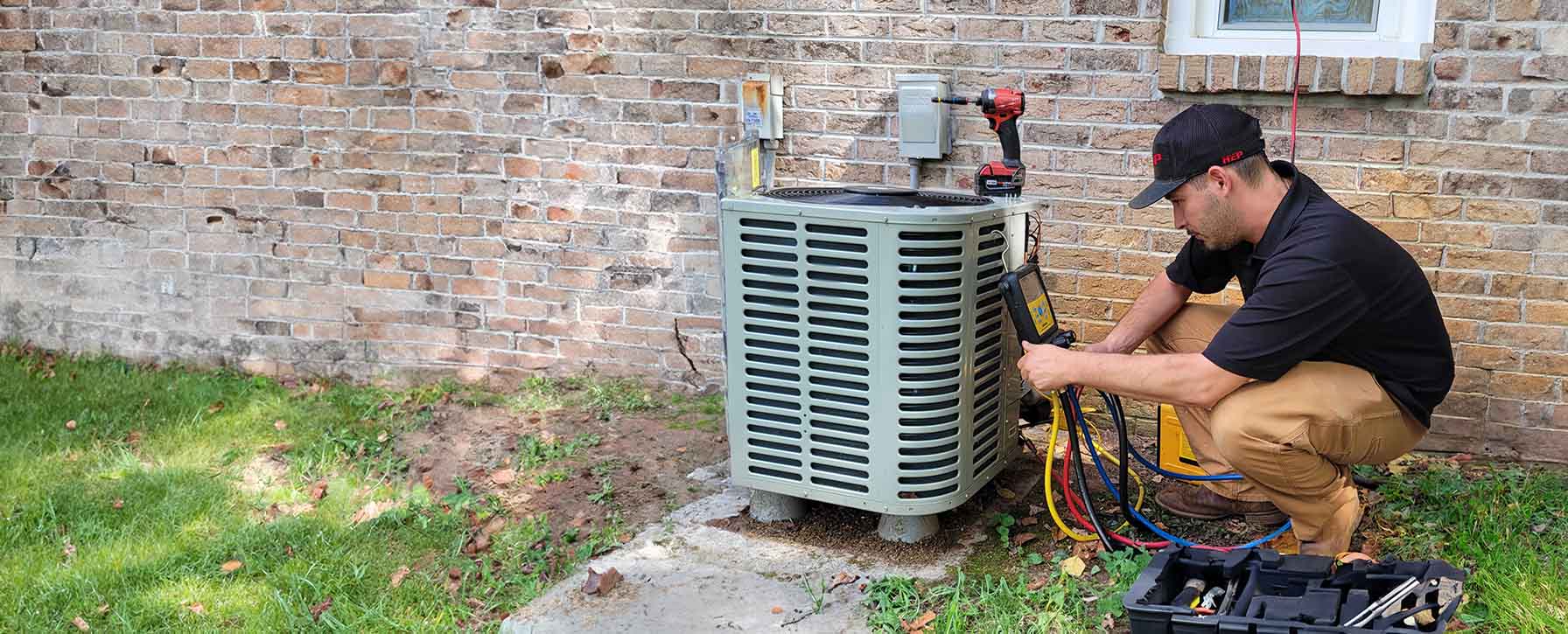

Indoor Air Quality
Your trusted partner for professional home services. Quality workmanship, guaranteed satisfaction.




- HEP
- Indoor Air Quality
Indoor Air Quality | Ventilation and Air Quality | Heating and Air Conditioning | Palmer
Imagine waking up in Palmer to crisp mountain air outside and equally fresh, healthy air inside. HEP’s indoor air quality specialists pair advanced heating and cooling technology with proven purification solutions to remove dust, pollen, and lingering odors, all while balancing humidity for year-round comfort. Our certified technicians analyze your home’s airflow, recommend energy-smart upgrades, and install cutting-edge filtration so every room feels—and smells—as clean as the Alaska wilderness.
That dedication to proper ventilation and air quality doesn’t stop after installation. We offer ongoing maintenance plans, smart-home monitoring, and 24/7 emergency support, ensuring your HVAC system keeps efficiency high and utility bills low even during Palmer’s coldest snaps and warmest thaws. Breathe easier, live better, and let HEP turn your house into the healthiest place on the map.
FAQs
Why is indoor air quality such a concern in Palmer, and how does our climate make it different from other areas?
Palmer’s long, cold winters encourage tightly sealed homes that trap heat—along with dust, pet dander, combustion by-products from fireplaces, and moisture from everyday activities. Because windows stay closed for months at a time, contaminants accumulate faster than they can be diluted. In spring and summer, wind-blown glacial silt, wildfire smoke, and pollen raise particulate levels outdoors, which then infiltrate the home. All of this means residents are exposed to higher concentrations of allergens and irritants year-round. A well-designed heating, ventilation, and air-conditioning (HVAC) system with proper filtration, balanced ventilation, and humidity control is therefore critical for comfort, health, and preserving the integrity of your building materials.
How can I increase ventilation in winter without wasting energy or overworking my heating system?
The most efficient solution is a heat-recovery ventilator (HRV) or energy-recovery ventilator (ERV). These devices exhaust stale indoor air while capturing up to 80–90 % of its heat (and, with ERVs, some of its moisture) to warm the incoming fresh air. They operate continuously at a low speed, so your indoor air is renewed 24/7 without a noticeable drop in temperature or spike in heating costs. Complementary strategies include using bathroom and kitchen exhaust fans on programmable timers, sealing duct leaks so warm air reaches living spaces instead of attics, and adjusting the blower fan on your furnace to circulate air when the burner is off. Our technicians size and balance HRV/ERV systems to fit Palmer’s climate and your home’s square footage.
How often should I replace or upgrade my HVAC filter, and which MERV rating is best for Palmer homes?
In most Palmer households a standard 1-inch pleated filter should be replaced every 60–90 days, but homes with pets, smokers, or allergy sufferers may need a change every 30–45 days. If you use a high-efficiency media cabinet with 4- or 5-inch filters, the interval can stretch to 6–12 months. As for MERV (Minimum Efficiency Reporting Value): • MERV 8: Good baseline for capturing lint, dust, and pollen with minimal airflow restriction. • MERV 11–13: Better for fine smoke particles, mold spores, and bacteria—ideal during wildfire season or for families with respiratory issues. Higher MERV filters remove more pollutants but can increase static pressure, so be sure your blower motor can handle the added resistance. We can test your system and recommend the highest MERV rating that preserves airflow and efficiency.
Do I need add-on air-cleaning equipment such as UV lights, electronic air cleaners, or portable purifiers?
It depends on your specific concerns. A high-MERV filter tackles most particulate matter, but biological growth and gaseous odors may require extras: • UV-C lamps installed in the air handler kill mold and bacteria on coils and drain pans, reducing musty smells and biofilm. • Electronic air cleaners (ionizers or electrostatic precipitators) capture ultrafine particles smaller than what typical filters catch, improving relief for allergy and asthma sufferers. • Activated-carbon filters or photocatalytic oxidizers remove volatile organic compounds (VOCs) from cleaning products, paints, and off-gassing furniture. • Portable room purifiers are helpful for targeted areas, such as a nursery or home office. Our indoor air quality audit pinpoints contaminant sources so we can recommend the most cost-effective combination rather than a one-size-fits-all package.
What are the warning signs of poor indoor air quality, and when should I call for a professional assessment?
Common indicators include persistent allergy or asthma flare-ups, frequent headaches or fatigue, lingering odors even after cleaning, visible dust buildup within days of vacuuming, condensation on windows, and mold spots on walls or ceilings. Soot streaks around supply registers can signal incomplete combustion or filtration problems. If carbon monoxide detectors alarm, or you use vent-free gas heaters, schedule an immediate inspection. You should also arrange testing after a remodel, new flooring installation, or wildfire smoke event. Our technicians use calibrated particle counters, humidity probes, and gas sensors to identify pollutants and provide a remediation plan.
Will duct cleaning and sealing really improve comfort and lower my energy bills in Palmer?
Yes—if your ducts are dirty or leaky. Debris inside ductwork restricts airflow, forcing the blower motor to run longer to heat or cool your home. Leaks, especially in unconditioned attics or crawl spaces, can waste 20–30 % of the air you pay to heat. Professional cleaning removes accumulated dust, pet hair, and construction debris that harbor allergens. After cleaning, we pressure-test the system, seal joints with mastic or Aeroseal technology, and add insulation where needed. Customers typically notice more even room temperatures, less dust on furniture, and energy savings of 10–20 %. Combined with proper filtration and ventilation, duct sealing is a cost-effective way to boost indoor air quality and overall HVAC performance.